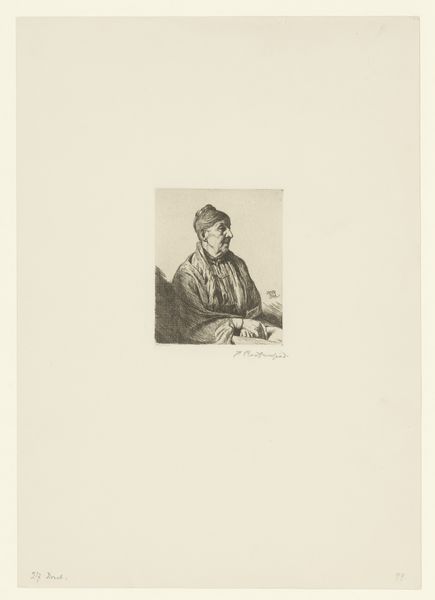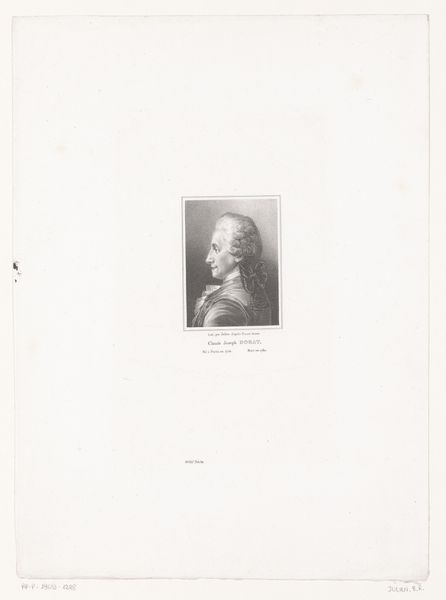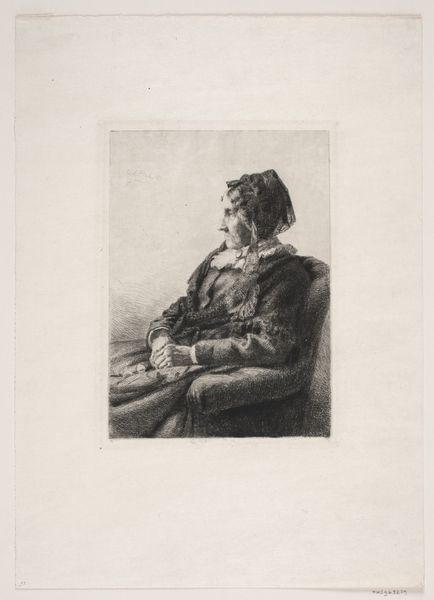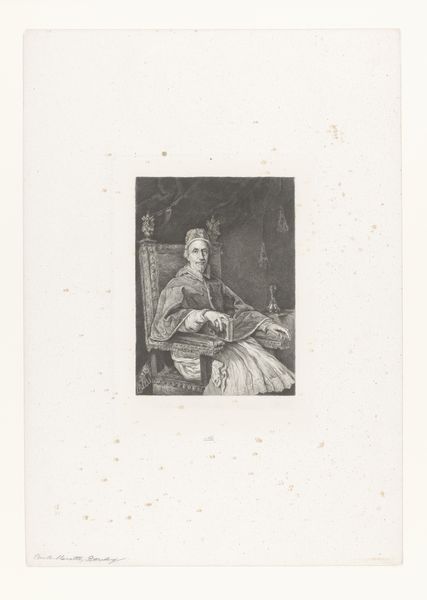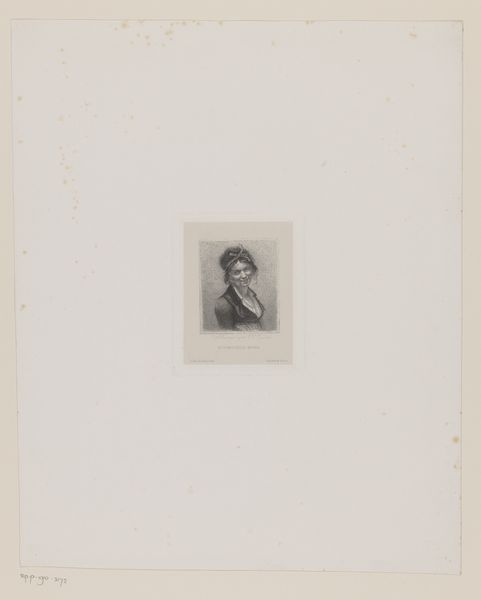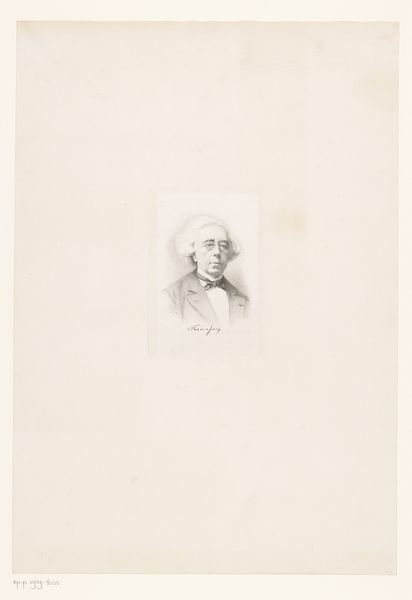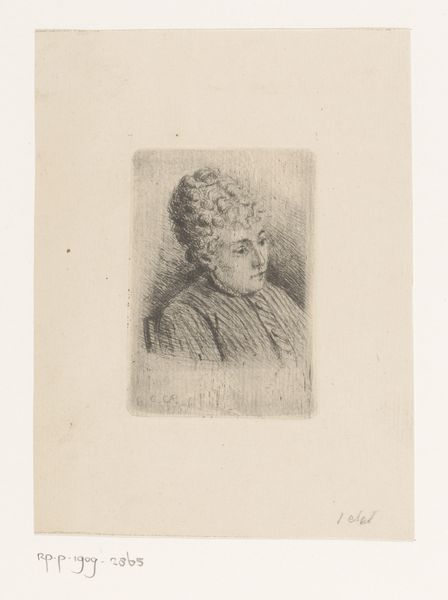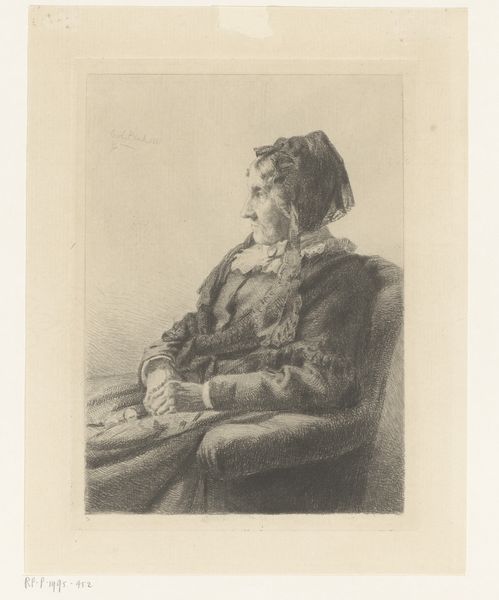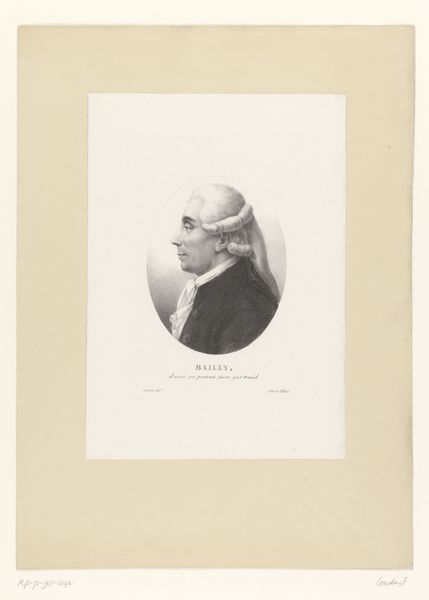
drawing, print, etching, pencil
#
portrait
#
drawing
# print
#
etching
#
figuration
#
pencil
#
realism
Dimensions: height 150 mm, width 124 mm
Copyright: Rijks Museum: Open Domain
Curator: Looking at Heinrich Reifferscheid’s 1909 print, “Dame in een stoel gezeten,” or “Lady Sitting in a Chair,” I immediately sense a weightiness. Is it just me, or does this etching convey a solemn stillness? Editor: Absolutely, and it invites consideration of the symbols tied to women’s societal roles. This piece offers such a clear snapshot into early 20th-century societal expectations. We can also discuss the lack of color in etching prints, emphasizing structure over ornamentation, how did the image of women change at this time in art and culture? Curator: Indeed. The print medium itself—etching and pencil on paper—reinforces the stark realism. There’s an austerity here. Realism is quite suitable for a social critique; the crosshatching adds a tactile element, hinting at the rough realities. This kind of detailed work lends a gravity, like the weight of tradition itself. I find the woman's composed but careworn face, to reveal something. Editor: It's a controlled environment, isn't it? Her fixed position, a quiet life etched on her face; there are no embellishments. How can you convey inner resistance, let alone rebellion when there is stillness in its medium and pose? Do you read more in this particular direction in her gesture? Curator: I perceive an invitation to engage with empathy toward this woman and other women facing adversity during this moment. Her face is cast in profile, gazing to the right but facing the light. Even if resigned, she is still composed, sitting on a chair almost as if enthroned on a modest seat; the material is used in symbolic context to her environment to emphasize the social hierarchy to which she seems confined. Editor: In considering this image with you, it is almost like excavating cultural meaning, while, it also resonates for those today with challenges they feel like they will be forever struggling with. Curator: Exactly. Perhaps seeing and naming such traditions is itself the first step toward reimagining them.
Comments
No comments
Be the first to comment and join the conversation on the ultimate creative platform.

